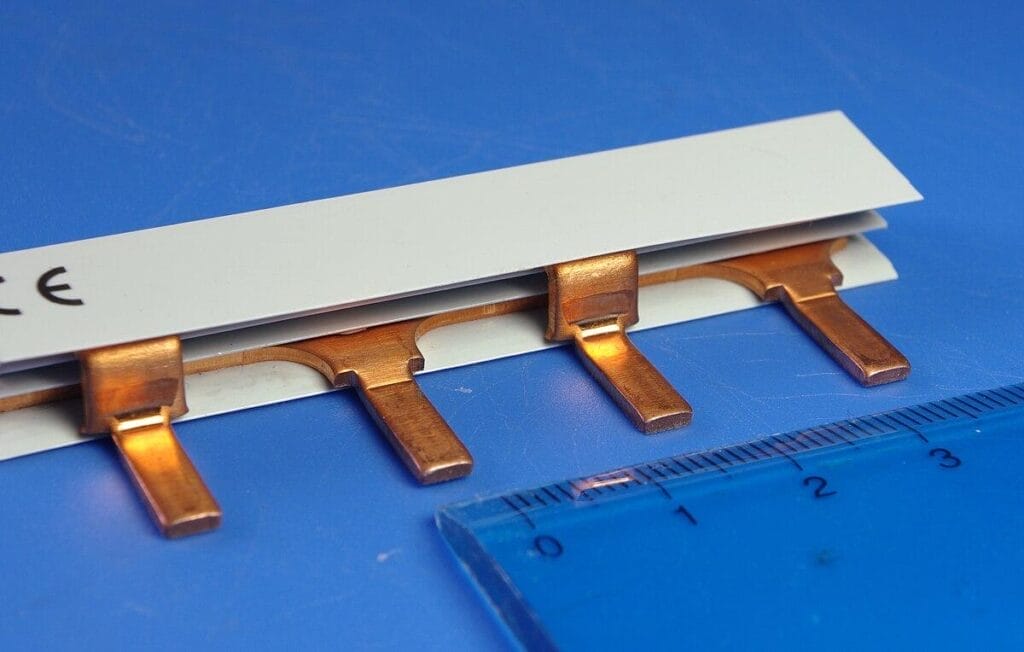Electrical spacing is a critical aspect of electrical engineering, ensuring the safety, reliability, and efficiency of electrical systems. It involves maintaining adequate distances between electrical components to prevent short circuits, electrical arcing, and other hazardous situations.
In this article, we delve into the importance of electrical spacing, key considerations, standards, and how our services at SendCutSend can help to maintain optimal spacing in electrical systems.
Importance of Electrical Spacing
Safety
The primary concern in electrical systems is safety. Inadequate spacing between electrical components can lead to short circuits, resulting in electrical fires, equipment damage, or even personal injury. Proper spacing and or the use of insulation materials help to minimize the risk of these dangerous occurrences.
Efficiency and Reliability
Well-designed electrical spacing ensures that electrical systems operate efficiently and reliably. Proper spacing prevents interference between components, reducing the likelihood of system failures and extending the lifespan of electrical equipment.
Compliance with Standards
Adhering to electrical spacing standards is crucial for compliance with national and international regulations. Non-compliance can result in legal penalties, fines, and reputational damage for businesses and professionals involved in electrical installations.
Key Considerations in Electrical Spacing
Voltage Levels
Different voltage levels require different spacing requirements. Higher voltages necessitate greater distances between components to prevent electrical arcing and ensure insulation integrity. Engineers must consider the voltage levels in their designs to determine appropriate spacing.
At the same time it’s important to note that Higher voltages and or higher currents can emit EMI and a very common way to reduce EMI is to couple the opposing voltages tightly together to help cancel out fields when possible. In many cases the positive and negative polarities or phase wires will be laminated tightly together with an insulation material between them.
Environmental Conditions
Environmental factors such as atmospheric pressure, humidity, temperature, and the presence of dust or corrosive substances can influence the required spacing. Harsh environments may require increased spacing to account for potential degradation of insulation materials and increased risk of arcing. As well lower atmospheric pressure requires greater electrical spacing as an arc can happen easier in lower pressures.
Component Characteristics
The physical and electrical properties of components, such as size, shape, and insulation type, play a significant role in determining spacing. Components with higher insulation ratings may allow for reduced spacing, while larger components may require more space to avoid physical interference.
Cooling and Ventilation
Proper spacing is essential for adequate cooling and ventilation of electrical components. Overcrowded components can overheat, leading to reduced efficiency, accelerated aging, and potential failure. Ensuring sufficient airflow around components helps maintain optimal operating temperatures. This becomes an even larger challenge in the vacuum of space where the lack of air to cool or heat items is not available so placing components on a thermally conductive surface takes special consideration of the items thermal needs.
Why Use SendCutSend

At SendCutSend services such as deburring removes small imperfections, scratches, and burrs left over from the cutting process. By deburring the parts in the system you reduce the risk of a sharp edge promoting an arc, as a round corner is much less likely to promote an arc VS a sharp or pointed corner. As well deburring reduces the chance that chafing will cause the insulation (when used) between parts to be compromised.
Additional benefits include keeping surfaces true and clean for proper connections and a proper surface when a seal is needed. For many applications tumbling can also be a great way to help reduce sharp edges and imperfections.
Some applications can benefit from protecting components where minimal electrical spacing is required. Services like anodizing or powder coating can be useful. As well as different plating for reducing corrosion where components need a good electrical connection.
Standards and Regulations
Various standards and regulations govern the use of many electrical components to ensure safety and performance. In many electrical systems guidelines will be set out from one of the following bodies. Some of the key standards include:
National Electrical Code (NEC)
The NEC provides guidelines for electrical installations in the United States, including spacing requirements for different voltage levels and environmental conditions. It is widely adopted and serves as a benchmark for safe electrical practices.
International Electrotechnical Commission (IEC) Standards
The IEC develops international standards for electrical and electronic technologies. IEC standards cover a wide range of electrical spacing requirements, providing a global framework for safe and efficient electrical system design.
Underwriters Laboratories (UL) Standards
UL develops safety standards for electrical products and systems. UL standards include specific spacing requirements to ensure the safe operation of electrical equipment, particularly in consumer and industrial applications.
Best Practices for Maintaining Electrical Spacing
Detailed Planning and Design
Thorough planning and design are essential to ensure adequate electrical spacing and deburring. Engineers should consider all relevant factors, including voltage levels, environmental conditions, and component characteristics, during the design phase.
Regular Inspections and Maintenance
Routine inspections and maintenance help identify potential spacing issues before they become critical. Regular checks can detect wear and tear, environmental impacts, and other factors that may affect spacing over time.
Use of Insulation Barriers

Insulation barriers can be used to maintain proper spacing between components. These barriers provide physical separation and additional insulation, reducing the risk of electrical arcing and short circuits. As well barriers can be used to laminate opposing potentials to help reduce EMI. For some applications anodizing or even powder coating can be used for an insulation barrier.
Using SendCutSend Services for Electrical Spacing Safety
Electrical spacing is a fundamental aspect of electrical engineering that ensures the safety, reliability, and efficiency of electrical systems. By understanding the importance of spacing, considering key factors, adhering to standards, and following best practices, engineers and professionals can design and maintain electrical systems that operate safely and efficiently.
Proper electrical spacing and component preparation will not only protect equipment and personnel but will also contribute to the overall performance and longevity of electrical systems. Have a look at our many services and see what we offer to help to ensure your electrical project comes to fruition!





